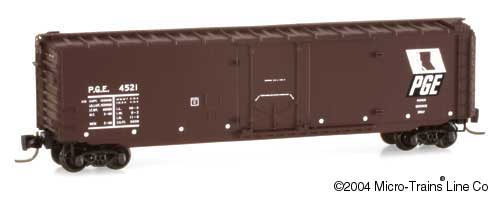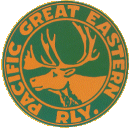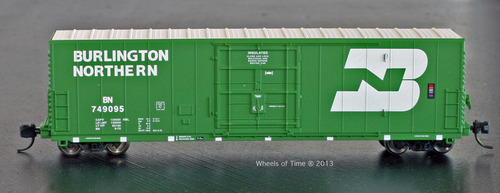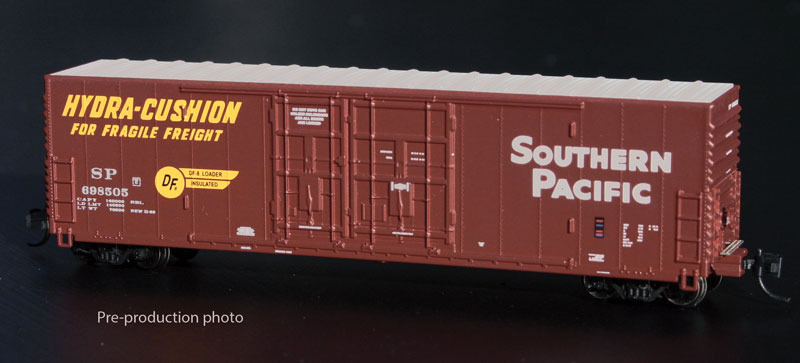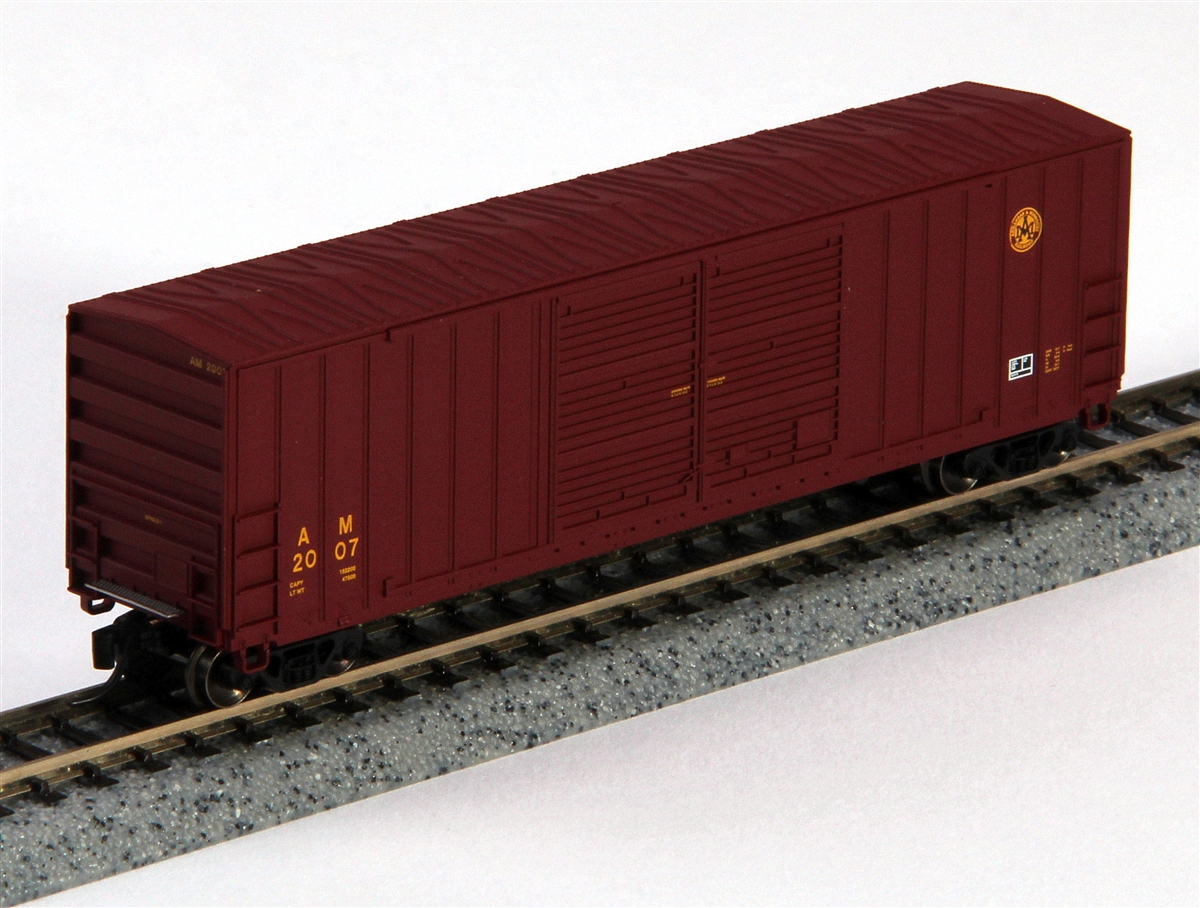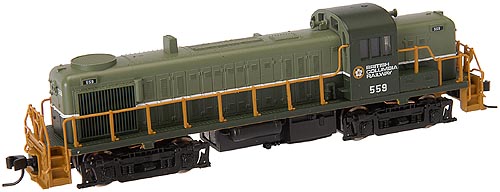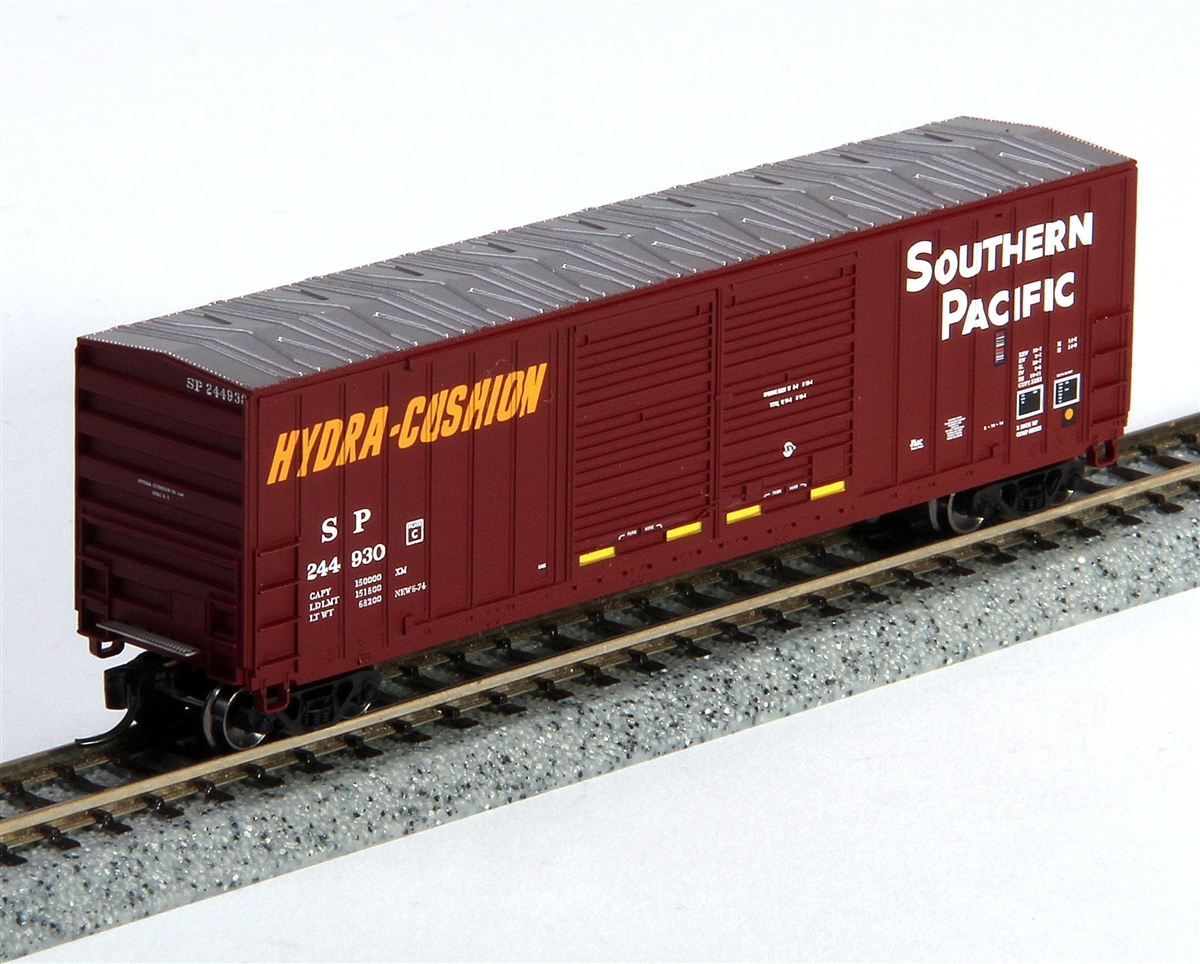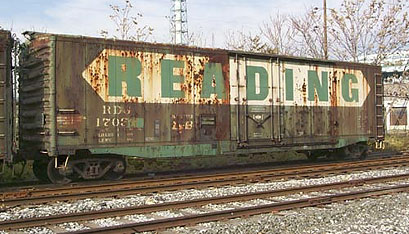Prototype History: The 50-foot boxcar made its first appearance in the 1930s and steadily grew in popularity over the years, which further improved redundancies by allowing for even more space within a given car. Today, the 50-footer remains the common boxcar size. After the second world war ended, and steel became once again readily available, steel became the go-to choice for construction of boxcars. Pullman Standard and ACF were some of the most prolific builders of these cars.
In the 1960s, the flush, "plug" style sliding door was introduced as an option that provides a larger door to ease loading and unloading of certain commodities. The tight-fitting doors are better insulated and allow a car's interior to be maintained at a more even temperature.
In the 1960s, the flush, "plug" style sliding door was introduced as an option that provides a larger door to ease loading and unloading of certain commodities. The tight-fitting doors are better insulated and allow a car's interior to be maintained at a more even temperature.
Road Name History: PGE launched in 1912 with a 12 mile line from North Vancouver, British Columbia to Horseshoe Bay where they picked up another 30 mile line reaching a point just north of Squamish. Six years later, the Province of British Columbia bought the railroad. By 1921, they had built north as far as Quesnel but that was it for the next 31 years. The south end of the line was abandoned in 1928.
In 1951, the Province pushed construction of the PGE north to Prince George in central B.C. and a connection with a Canadian National transcon line. This was the first physical connection with the North American rail network. Prior to that, interchange required car barges. In 1956, a rail link was finally completed to CN and CP in North Vancouver, finally closing the loop. In 1958, lines were built north from Prince George to Dawson Creek (and another CN connection.) In 1971, northward construction resumed to Fort St. John and finally Fort Nelson. This brought the mileage to 1,372 (putting it between Lehigh Valley and Iowa Chicago & Eastern in relative size.) The following year, 1972, the Pacific Great Eastern became the British Columbia Railway.
In 1951, the Province pushed construction of the PGE north to Prince George in central B.C. and a connection with a Canadian National transcon line. This was the first physical connection with the North American rail network. Prior to that, interchange required car barges. In 1956, a rail link was finally completed to CN and CP in North Vancouver, finally closing the loop. In 1958, lines were built north from Prince George to Dawson Creek (and another CN connection.) In 1971, northward construction resumed to Fort St. John and finally Fort Nelson. This brought the mileage to 1,372 (putting it between Lehigh Valley and Iowa Chicago & Eastern in relative size.) The following year, 1972, the Pacific Great Eastern became the British Columbia Railway.
Brand/Importer Information: Micro-Trains is the brand name used by both Kadee Quality Products and Micro-Trains Line. For a history of the relationship between the brand and the two companies, please consult our Micro-Trains Collector's Guide.
Manufacturer Information:  Micro-Trains Line split off from Kadee Quality Products in 1990. Kadee Quality Products originally got involved in N-Scale by producing a scaled-down version of their successful HO Magne-Matic knuckle coupler system. This coupler was superior to the ubiquitous 'Rapido' style coupler due to two primary factors: superior realistic appearance and the ability to automatically uncouple when stopped over a magnet embedded in a section of track. The success of these couplers in N-Scale quickly translated to the production of trucks, wheels and in 1972 a release of ready-to-run box cars.
Micro-Trains Line split off from Kadee Quality Products in 1990. Kadee Quality Products originally got involved in N-Scale by producing a scaled-down version of their successful HO Magne-Matic knuckle coupler system. This coupler was superior to the ubiquitous 'Rapido' style coupler due to two primary factors: superior realistic appearance and the ability to automatically uncouple when stopped over a magnet embedded in a section of track. The success of these couplers in N-Scale quickly translated to the production of trucks, wheels and in 1972 a release of ready-to-run box cars.
Micro-Trains Line Co. split off from Kadee in 1990 to form a completely independent company. For this reason, products from this company can appear with labels from both enterprises. Due to the nature of production idiosyncrasies and various random factors, the rolling stock from Micro-Trains can have all sorts of interesting variations in both their packaging as well as the products themselves. When acquiring an MTL product it is very important to understand these important production variations that can greatly enhance (or decrease) the value of your purchase.
Please consult our Micro-Trains Collector's Guide

Micro-Trains Line Co. split off from Kadee in 1990 to form a completely independent company. For this reason, products from this company can appear with labels from both enterprises. Due to the nature of production idiosyncrasies and various random factors, the rolling stock from Micro-Trains can have all sorts of interesting variations in both their packaging as well as the products themselves. When acquiring an MTL product it is very important to understand these important production variations that can greatly enhance (or decrease) the value of your purchase.
Please consult our Micro-Trains Collector's Guide
Item created by: Lethe on 2015-05-31 17:46:30. Last edited by Alain LM on 2022-03-27 06:21:16
If you see errors or missing data in this entry, please feel free to log in and edit it. Anyone with a Gmail account can log in instantly.
If you see errors or missing data in this entry, please feel free to log in and edit it. Anyone with a Gmail account can log in instantly.


